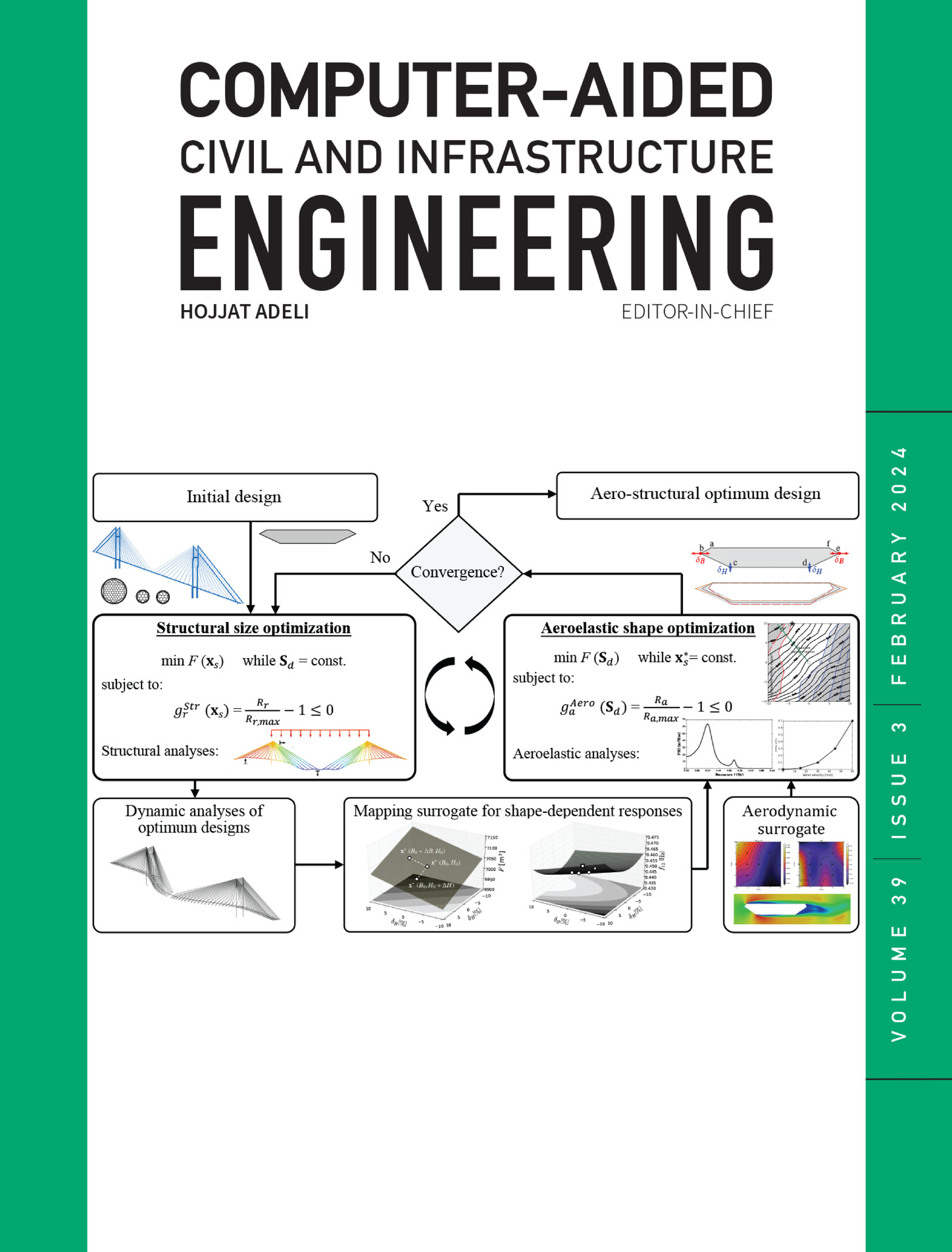Complete-coverage path planning for surface inspection of cable-stayed bridge tower based on building information models and climbing robots
IF 8.5
1区 工程技术
Q1 COMPUTER SCIENCE, INTERDISCIPLINARY APPLICATIONS
引用次数: 0
Abstract
Climbing robots present transformative potential for automated structural inspections, yet their deployment remains limited by the reliance on manual control due to the absence of effective environment perception and path-planning solutions. The critical bottleneck lies in the difficulty of generating accurate planning maps solely through onboard sensors due to the challenge of capturing open, large-scale, and irregular environments (e.g., cable-stayed bridge towers). This study proposes a building information modeling (BIM)-based complete-coverage path planning (BCCPP) framework, leveraging BIM to enable autonomous robotic inspection. The framework constructs accurate grid maps through BIM data, addressing the map-perception problem for robots in open, large-scale, and irregular environment while refining the boustrophedon-A* algorithm with multi-heuristic optimization, which reduces path repetition and improves energy efficiency. Field and simulated experiments on a cable-stayed bridge tower show the BCCPP achieves 93.5% coverage with 9.1% repetition, and planned paths were executable within a 0.2 m tolerance and collisions avoided. This work bridges BIM, climbing robot, and path planning, offering a scalable solution for intelligent infrastructure inspection.求助全文
约1分钟内获得全文
求助全文
来源期刊
CiteScore
17.60
自引率
19.80%
发文量
146
审稿时长
1 months
期刊介绍:
Computer-Aided Civil and Infrastructure Engineering stands as a scholarly, peer-reviewed archival journal, serving as a vital link between advancements in computer technology and civil and infrastructure engineering. The journal serves as a distinctive platform for the publication of original articles, spotlighting novel computational techniques and inventive applications of computers. Specifically, it concentrates on recent progress in computer and information technologies, fostering the development and application of emerging computing paradigms.
Encompassing a broad scope, the journal addresses bridge, construction, environmental, highway, geotechnical, structural, transportation, and water resources engineering. It extends its reach to the management of infrastructure systems, covering domains such as highways, bridges, pavements, airports, and utilities. The journal delves into areas like artificial intelligence, cognitive modeling, concurrent engineering, database management, distributed computing, evolutionary computing, fuzzy logic, genetic algorithms, geometric modeling, internet-based technologies, knowledge discovery and engineering, machine learning, mobile computing, multimedia technologies, networking, neural network computing, optimization and search, parallel processing, robotics, smart structures, software engineering, virtual reality, and visualization techniques.

 求助内容:
求助内容: 应助结果提醒方式:
应助结果提醒方式:


